Photographs: Parivartan Sharma/Reuters Mansi Taneja and Nivedita Mookerji in New Delhi
Many builders, including Jaypee, Wave Infratech and Tata Housing, have experimented with affordable housing in recent times.
Some have even managed to sell these homes like hot cakes in an otherwise down market.
Is that the future of housing in the country?
The proverbial pot of gold at the bottom of the pyramid?
Experts point out that whenever the economy hits a downturn, realtors think of affordable homes as a safe bet.
However, it is not the buyers who should rejoice.
The photograph is used for representational purpose only
. . .
Affordable houses, but for whom?
Photographs: Reuters
The category is so loosely defined that developers often stretch the scope of affordable in many ways.
Around the world, affordability of a house is arrived at by using the housing affordability index of a country.
In Australia, it is referred to as a ". . .reasonably adequate in standard and location for lower or middle income households which does not cost so much that a household is unlikely to be able to meet other basic needs on a sustainable basis."
In the UK, affordable housing includes 'social rented and intermediate housing, provided to specified eligible households whose needs are not met by the market.'
In the US and Canada, a commonly accepted guideline for affordability is a house whose monthly carrying cost (rent or EMI) does not exceed 30 per cent of a household's gross income.
. . .
Affordable houses, but for whom?
Image: An aerial view of Mumbai.Photographs: Adeel Halim/Reuters
In India, the EMI limit is set at 30 to 40 per cent of gross income, but neither the developers nor the buyers follow the norm.
A recent KPMG-Credai (Confederation of Real Estate Developer's Association of India) study says, affordable and low-cost housing are often used interchangeably in India, but are quite different from each other.
"Low-cost housing is generally meant for the economically weaker section and comprises bare minimum housing facilities, while affordable housing is mostly meant for the lower-and middle-income group and includes basic amenities like schools, hospitals and other community facilities and services."
. . .
Affordable houses, but for whom?
Photographs: Rediff Archives
A range of prices
Affordable housing means different things to different people. A case in point is Wave group's affordable housing project, Wave City, in Ghaziabad.
The project was launched on March 23, and by end April, it had already sold/booked about 1,800 units (phase I).
With schools, hospitals, and commercial complex in the integrated township, it has a total of 3,500 units with 1BHK and 2BHK options (575 -800 sq ft) in the range of Rs 14 lakh (Rs 1.4 million) to Rs 18 lakh (Rs 1.8 million).
While the project was launched at Rs 2,300 per sq ft, it was selling at Rs 2,500 per sq ft soon after.
"Our affordable housing foray has been extremely successful even in the current market scenario, which indicates there is enough demand for the right product in this market; this approach helps in countering any market anomalies," says a Wave executive.
The photograph used is for representational purpose only
. . .
Affordable houses, but for whom?
Photographs: Reuters
A look at the projects launched reveals there is no unanimity on what constitutes affordability.
Among others, Jaypee's affordable project in Greater Noida is offering flats with a basic sale price starting at Rs 26.5 lakh (Rs 2.65 million) that goes up to Rs 58.4 lakh (Rs 5.84 million) depending on the size of the house.
Tata Housing's fully-owned, subsidiary Smart Value Homes, offers low-cost/affordable housing in the price range of Rs 500,000 to Rs 35 lakh (Rs 3.5 million).
It has four projects in Boisar, Vasind (both near Mumbai), Ahmedabad and Bengaluru.
. . .
Affordable houses, but for whom?
Photographs: Courtesy, Business Standard
Speaking on Supertech's affordable venture at Eco Village, Yamuna Expressway, just outside Delhi, Mohit Arora, director, says, "We will deliver a total of 50,000 units in the next five years, out of which 60 per cent would be affordable."
For Supertech, the affordable price range starts from Rs 30 lakh (Rs 3 million) and goes up to Rs 70-75 lakh (Rs 7-7.5 million), with area ranging from 1,000 sq ft to 1,700 sq ft.
The end users
Given that these housing projects are not really affordable, who's buying them?
Anshul Jain, India CEO, DTZ, a leading consultancy in real estate, says that affordable homes in the country are mostly not being bought by people in the lower or even middle income group.
. . .
Affordable houses, but for whom?
Image: Workers walk in front of a multi-story commercial building under construction on the outskirts of Ahmedabad.Photographs: Amit Dave/Reuters
"Studio apartments at Rs 30 lakh (Rs 3 million) to Rs 40 lakh (Rs 4 million), for example, are being picked up by investors in a big way," says he.
Every time the market slows, developers reduce the ticket size, thereby reducing the prices for smaller units, while retaining the amenities that usually go with high-end projects.
It is a marketing gimmick, says Sanjay Sharma, managing director of Qubrex, another real estate consultancy, while dismissing the concept of affordable homes altogether.
Going back to the slowdown of 2008-09, Sharma points to the launch of a number of affordable projects, and how once the economy started recovering, builders upped the prices by adding "value" to the units.
The photograph is used for representational purpose only
. . .
Affordable houses, but for whom?
Image: A worker climbs to fasten iron rods together at the construction site of a high-rise building in central Mumbai.Photographs: Vivek Prakash/Reuters
"Most affordable housing projects have not survived in India as everything from apartment size and price to amenities changes after the launch," he says, adding that the idea is to mop up money at the time of launch through smart marketing.
There is more evidence that builders only pay lip service to affordable housing. Despite a slew of launches, luxury homes are selling more than affordable ones.
According to research firm PropEquity, around 1,241 and 1,083 affordable units were launched in January and February, respectively, this year, while 4,816 and 3,821 units were launched in the luxury segment.
The photograph is used for representational purpose only
. . .
Affordable houses, but for whom?
Photographs: Arko Dutta/Reuters
In terms of absorption, 2,551 affordable homes were sold in January and 2,271 in February. In the luxury segment, the sale or absorption was almost double at 4,991 and 5,459 units.
Experts maintain that the supply in the affordable segment is much less compared to the demand.
And with more and more big developers shifting their focus to luxury housing because of high profit margins, the demand-supply situation in affordable segment is expected to become worse in the coming times.
The image used is for representational purpose only
. . .
Affordable houses, but for whom?
Photographs: Reuters
Luxury rules
A large developer which had launched affordable homes in the past is now expected to focus only on projects in the luxury and premium segments, with no expansion and no new projects in affordable space, according to a broker who did not want to be named.
Low profit margins are the main reason why developers don't want to go for real affordable housing.
The profit margin can't exceed 15 to 20 per cent when a project is truly affordable, say experts.
In a high-end project, the margin is way above that.
According to Sharma of Qubrex, margins will depend on the price of land, construction and administrative cost. Of these, land cost is the most critical.
Consultants say that affordable housing in the practical sense of the word is restricted to Tier II and Tier III cities, or on the outskirts of big cities.
. . .
Affordable houses, but for whom?
Photographs: Arko Dutta/Reuters
Currently, affordable segment is significantly present in Thane, Greater Noida, Noida and Navi Mumbai.
Samir Jasuja, founder & CEO, PropEquity, explains the trend.
"There has been a fundamental demand for affordable housing in India owing to the presence of a large low- and middle-income group.
Tier II and Tier III cities witness a comparatively higher supply of affordable housing as compared to Tier I cities.
High cost of land poses a challenge to developers to launch such projects in the central parts of the city. That is why, most of the affordable projects in Tier I cities would be found in peripheral areas."
With investors focussed on making money and developers on profit margins, affordability has taken a backseat; it has become just another way to make quick returns on investments.

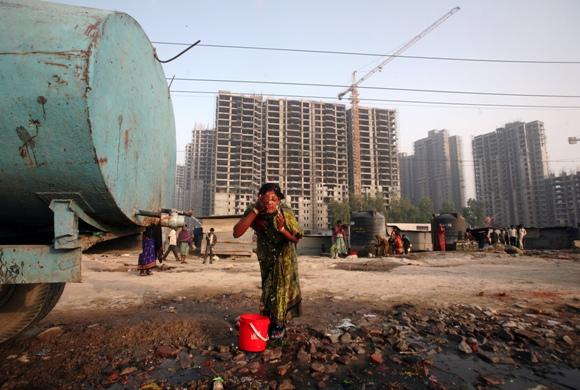
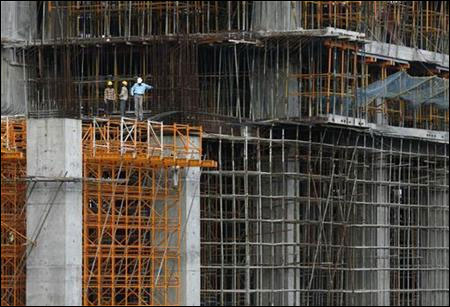
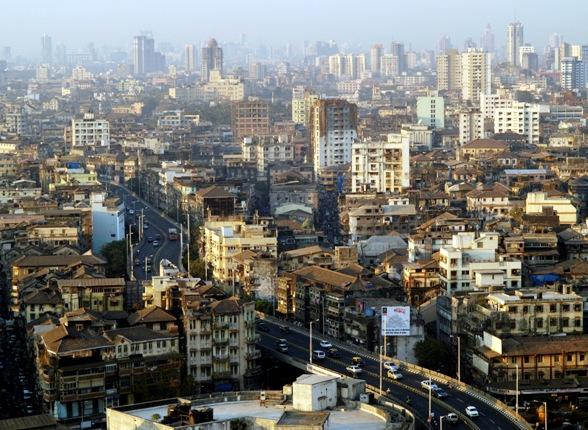


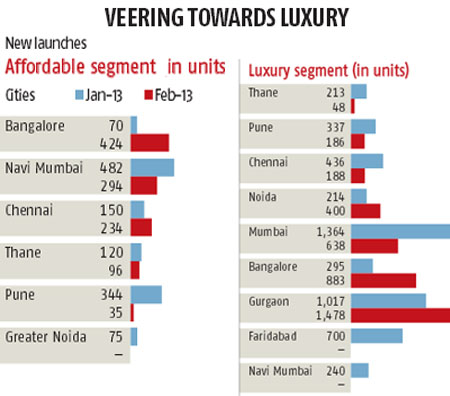
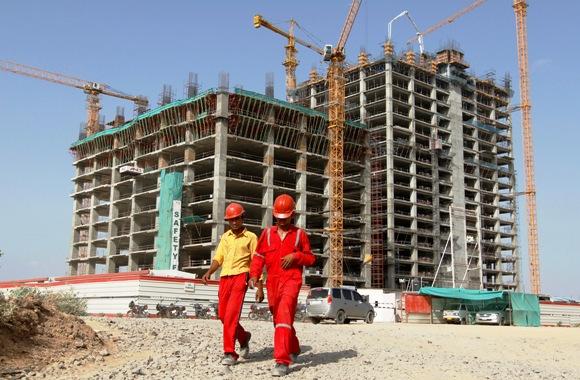
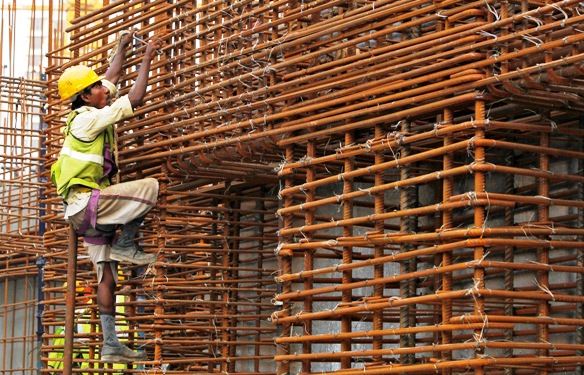
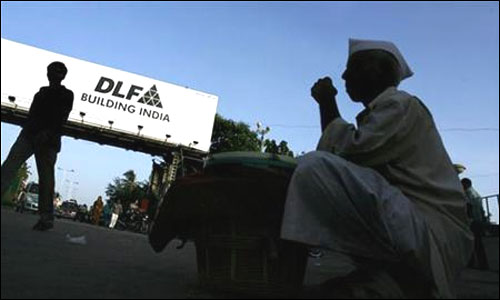
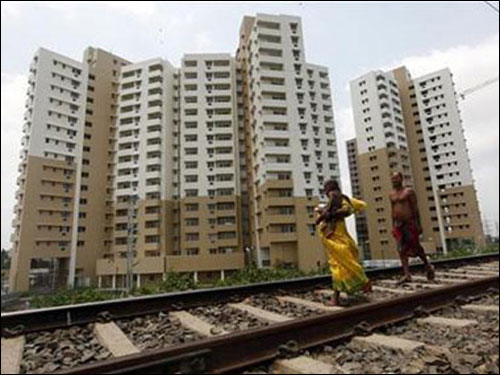
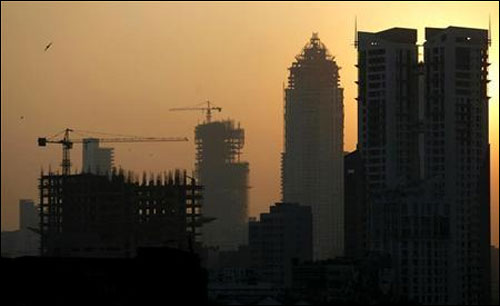

article